Samsung Galaxy Note 3 Review
by Brian Klug on October 1, 2013 9:00 AM EST- Posted in
- Smartphones
- Samsung
- Mobile
- Android 4.3
- galaxy note 3
Display
One of my only issues with the Note 2 after using it for a long time was resolution. Although the move to a subpixel matrix with a full 3 subpixels per pixel on the Note 2 honestly really put most of my concerns at bay at launch, 720p started to feel limiting further on in that product’s cycle. Having more display area is great, however in Android what really matters is resolution. It was ironic having this phone with a huge display, but 720p resolution that was quickly eclipsed by devices with so much smaller displays. With the Note 3 Samsung moves to 1080p at 5.7 inches, up from the 720p at 5.5 inches in the Note 2, and 1280x800 at 5.3 inches from the original Note.
A question that immediately comes up every time we get a Samsung phone with AMOLED is first, what kind, and second what subpixel unit cell is behind it all, be it an RGB stripe or some other RG,BG alternative unit cell. In the case of the Note 3 we unsurprisingly see Samsung use the same unit cell as they did on SGS4, an offset pattern with green on one line and red and blue on another line. There’s a square blue subpixel with more area than the circular red and green subpixels as well to compensate for the difference in luminous efficiency of the material used in each subpixel type. As I’ve said in the past this isn’t PenTile (although people have started using that brand as a proxy for RG,BG alternatives) but something else entirely, but the ultimate end is still the same, two subpixels per unit pixel and not an RGB stripe.
The question for most normals then becomes – is this a big deal or can a normal human being see it? I’d argue that the subpixels on the Note 3, like the SGS4, are now small enough that they can’t be seen. I used to very picky about this, but I don’t find the new offset RG,BG pattern distracting at all on the Note 3. Subpixel size moves from just above 1 arcminute (1.006 and 1.073 for the Note and Note 2 respectively) down to 0.741 for the Note 3, making them small enough to in theory exceed human eye resolution of 1 arcminute. I won’t break out the huge table or chart, or go over all of that again, but it’s nice to see that finally be the case with the Note 3.
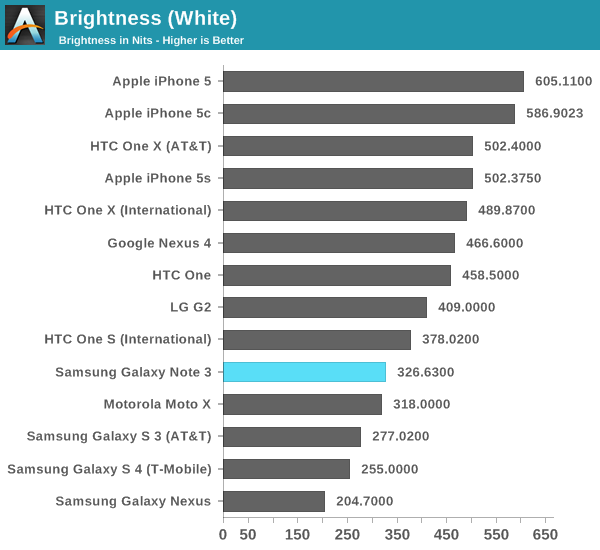
The Note 3 has the same display mode settings as we’ve seen in other generations, these mDNIe toggles allow some control over display color curves. They’re ultimately not a mitigation for Android’s lack of a real CMS and don’t completely solve the oversaturation issue that comes hand in hand with AMOLED’s different spectral curves, but they do help somewhat. These are unchanged as well from the SGS4 – Adapt Display is checked by default and will select which mode to use automatically for first party apps and a few others, but you can select between dynamic, standard, professional photo, and movie manually, which have different tunings for white point, gamut, and saturation. There’s also still the toggle for automatically adjusting screen tone depending on what’s being displayed.
Of the modes and configuration options available, I don’t doubt for a second that the most used one will be the defaults, however if you’re looking for the most sane from a color accuracy perspective it’s still Movie mode with the auto screen tone toggle unchecked. I gave Samsung the benefit of the doubt and ran all my measures in Movie mode as a result, but also took saturation measures of the other modes so you can see the difference in gamut and saturation with what you get under those.

The Standard and Dynamic modes have a ton of oversaturation, extending far beyond sRGB. In Dynamic mode we can also see some compression going on at the higher saturation levels, effectively blowing out those colors even more, with the second to last point almost on top of the last point. Pro Photo mode clamps down gamut and makes saturation a bit more linear, but has some odd other artifacts that show up. With the Movie selection made, the Note 3 display is considerably more controlled and linear, and makes a dramatic difference in how everything appears on the Note 3 during normal use. If you care about display really this is the only setting you should be using.
White point in movie mode is still bluer than I’d like at an average of just over 7100K, but in the all important Gretag Macbeth patch test, Delta-E is pretty low and puts it among iPhone 5, HTC One, and G2 territory. The results under movie mode from the Note 3 are actually nicely controlled. It still isn’t perfect, but there’s at least been an attempt made to give users that option if they don’t want garish colors that might look great on a store display but not so great if you care about matching photos you’ve taken to a display or print later, or web content between desktop and mobile.
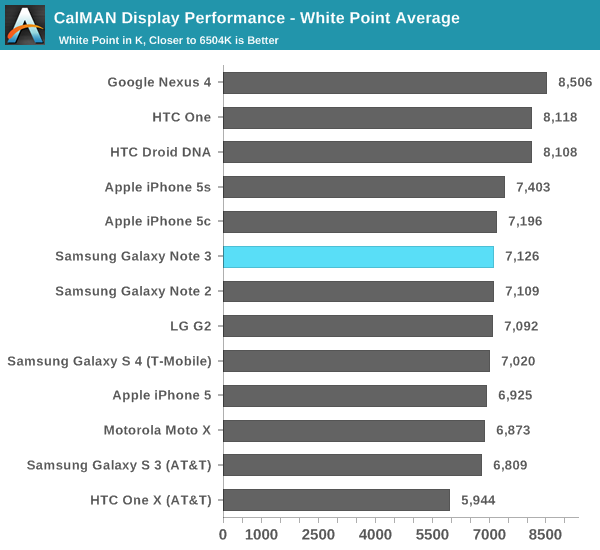
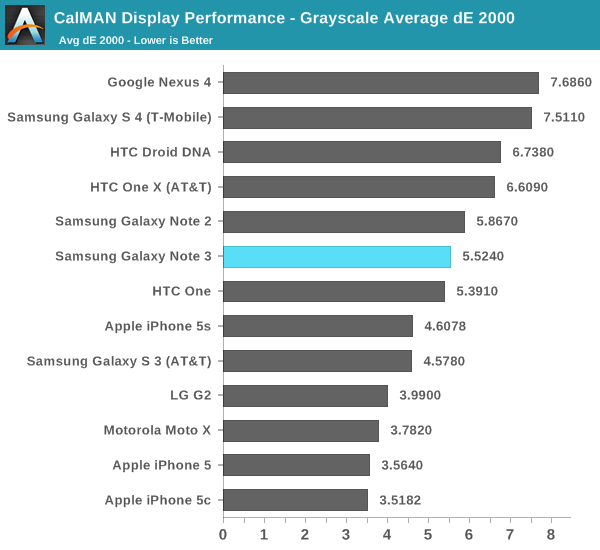
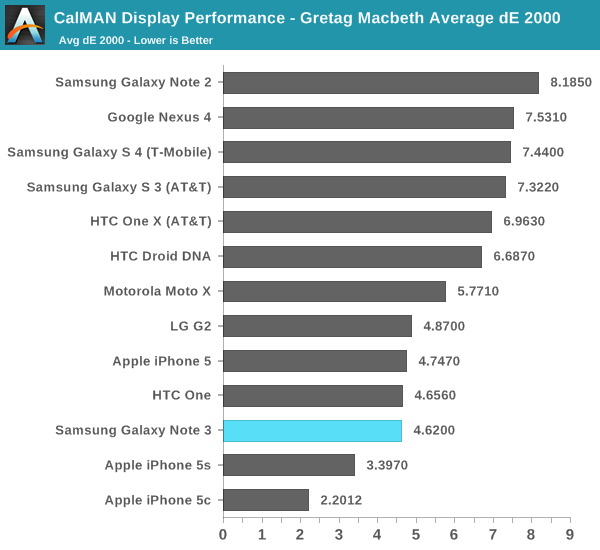
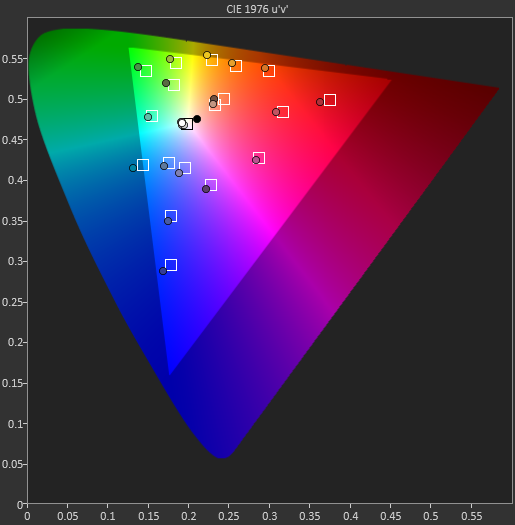
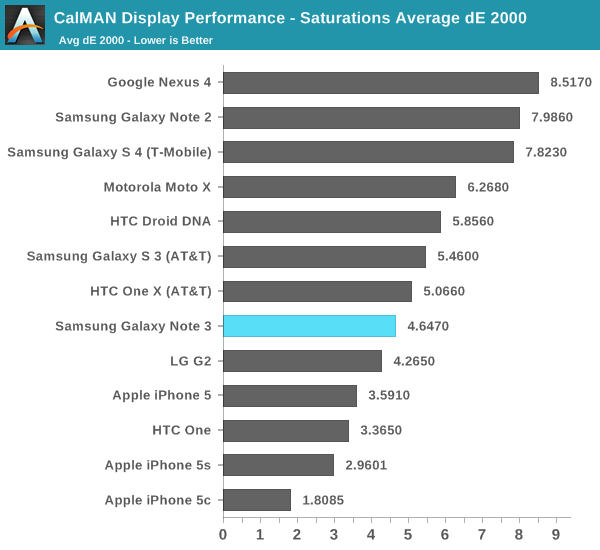



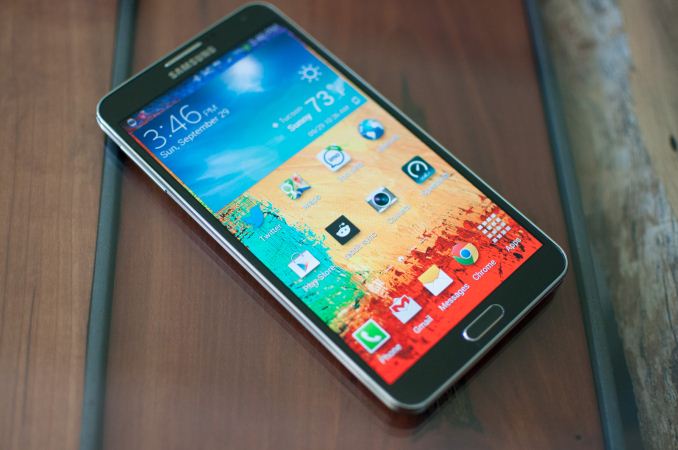
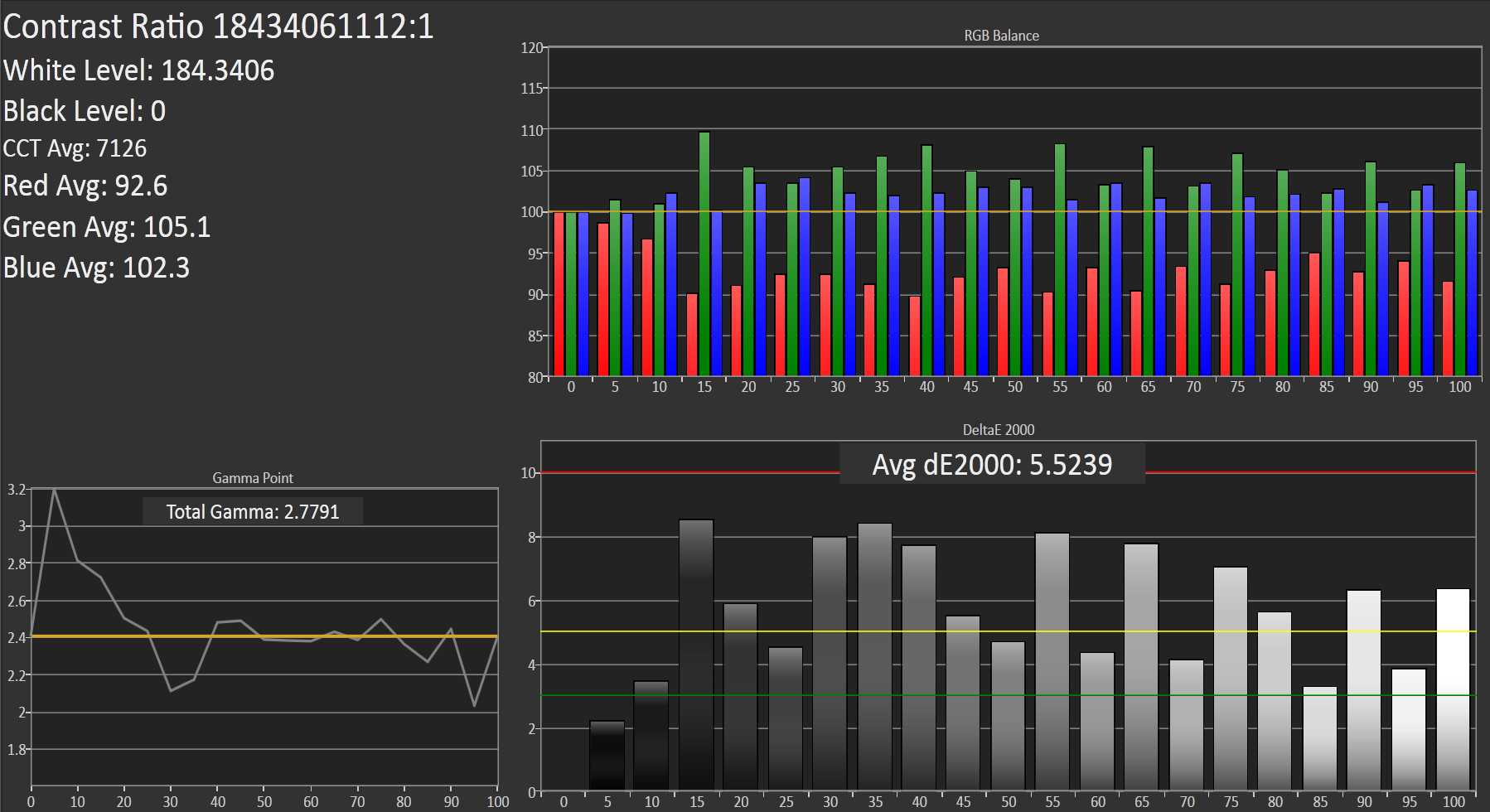








302 Comments
View All Comments
kmmatney - Tuesday, October 1, 2013 - link
The 5s has iOS, and some of us simply prefer it over Android. I've used both and have both Jailbroken iOS devices and rooted Android devices. I prefer iOS for devices I use the most, like my phone. Although a larger screen is nice, I'm not sure it's enough to get me to buy it over a 5S. I still have another 3-4 weeks to decide before I can upgrade. SD card, the pen, and removable battery don't matter and I won't use them, so it's really just screen size vs iOS for me.dugbug - Wednesday, October 2, 2013 - link
Oh please. Apple more than deserves reviews, as do the new intel chips. As does Android. The intense interest around the A7 was that it gets that performance at significantly lower clock rates. It is a vastly better chip, and fits the smaller handheld where battery space is a premium.What, are you guys begging for more power supply reviews?
steven75 - Wednesday, October 2, 2013 - link
It can do everything except fit comfortably in your pocket while walking, sitting down, climbing stairs, etc. I wouldn't carry an iPad Mini around with me for the same reason.Spunjji - Tuesday, October 8, 2013 - link
As a Note 2 owner, I do all of those things with my phone in my jeans pocket. Regular fit. The Note phones are significantly smaller than the iPad Mini. Thus yur argument is invalid. Now if you'd said kneeling down...ddriver - Tuesday, October 1, 2013 - link
No test of black levels and contrast ratio? Whyananduser - Tuesday, October 1, 2013 - link
AMOLED provides the perfect black(I'm personally always impressed by it every time). Everyone knows that by now and perhaps Anandtech reckoned it's pointless providing a chart with no bar next to the Note3.ddriver - Tuesday, October 1, 2013 - link
White levels are good on the iphone - they are included in the review. Black levels are inferior on the iphone - no need to include those in the review...Not to mention once again not a single native and multi-threaded CPU bench compares the note 3 to the 5s, probably because it will reveal the note 3 significantly faster than the 5s, which won't sit well with the "myth" about its performance apple PR created and websites like anand helped reinforce.
Come on anand...
Anand Lal Shimpi - Tuesday, October 1, 2013 - link
We've never included black levels for AMOLED phones as you're not actually measuring anything. We also obviously can't do contrast ratio thanks to the whole division by zero thing.ddriver - Tuesday, October 1, 2013 - link
There are still ambient factors, screen material properties and whatnot, even on amoled the black is not a perfect black and therefore contrast won't be infinite.ddriver - Tuesday, October 1, 2013 - link
I mean, just because a "black pixel" on amoled devices is not emitting light, it still has its physical properties and still reflects light, I doubt there will be exactly ZERO photos coming out of a black amoled screen. So, contrast ratio and black levels are still determinable.